Sixteen Days at Sea (384 Cubes of Reckitt’s Blue)
Speculative Everything
Curated by Amelia Wallin
Firstdraft, 2015
Speculative Everything
Curated by Amelia Wallin
Firstdraft, 2015
Many of the things Ian Fairweather made would never last. He stored and transported countless paintings by stacking them one on top of the other between two sheets of ply that he then nailed together. He favoured Reckitt’s blue—laundry bleach—as a pigment, he would use soap as a medium, clag glue, newspaper and borax too. A single painting might contain over seventy layers of paint. Thirty paintings that he sent from Australia to London arrived as one solid impenetrable mass. On returning from a 1929 visit to family in Canada, he sent for a trunk of drawings he had made there—inside it was heaving with Silverfish, their bellies full of paper. He should not have been surprised at the life of a mayfly, but probably was.
Some time during 1951 Fairweather began to study the tides. The Darwin coast was littered with post-war junk. He bound two aircraft fuel tanks to a piece of salvaged wood, food parachutes made a sail and a length of clothesline connected it all together. At night on 29 April 1952, between where the Bottlemart Express Darwin Trailer Boat Club and the SkyCity Casino now sit, Fairweather pushed his three-metre raft into the Timor Sea. Forced to lie down for the entire journey, he navigated by the stars toward Portuguese Timor, he remembered it well, it was where he had made some of his best work. The journey took much longer than the ten days he had anticipated. After sixteen days the raft—pushed off course by storms—was fortuitously caught by the currents of Roti Island, the last dot of land before the desolation of the Indian Ocean. Fairweather had survived to see his own obituary written in the papers. But he had arrived at the wrong island.
Sixteen Days at Sea (384 Cubes of Reckitt’s Blue) conflates Fairweather’s journey with his use of Reckitt’s Blue—a domestic bleaching agent he often used in his paintings as a substitute for blue pigment. His personal life—hermit, artist, migrant—was as soluble and unstable as the materials he chose to work with from his studio on Bribie Island off the Coast of Queensland. Each pellet of Reckitt’s Blue amounts to an hour spent at sea.
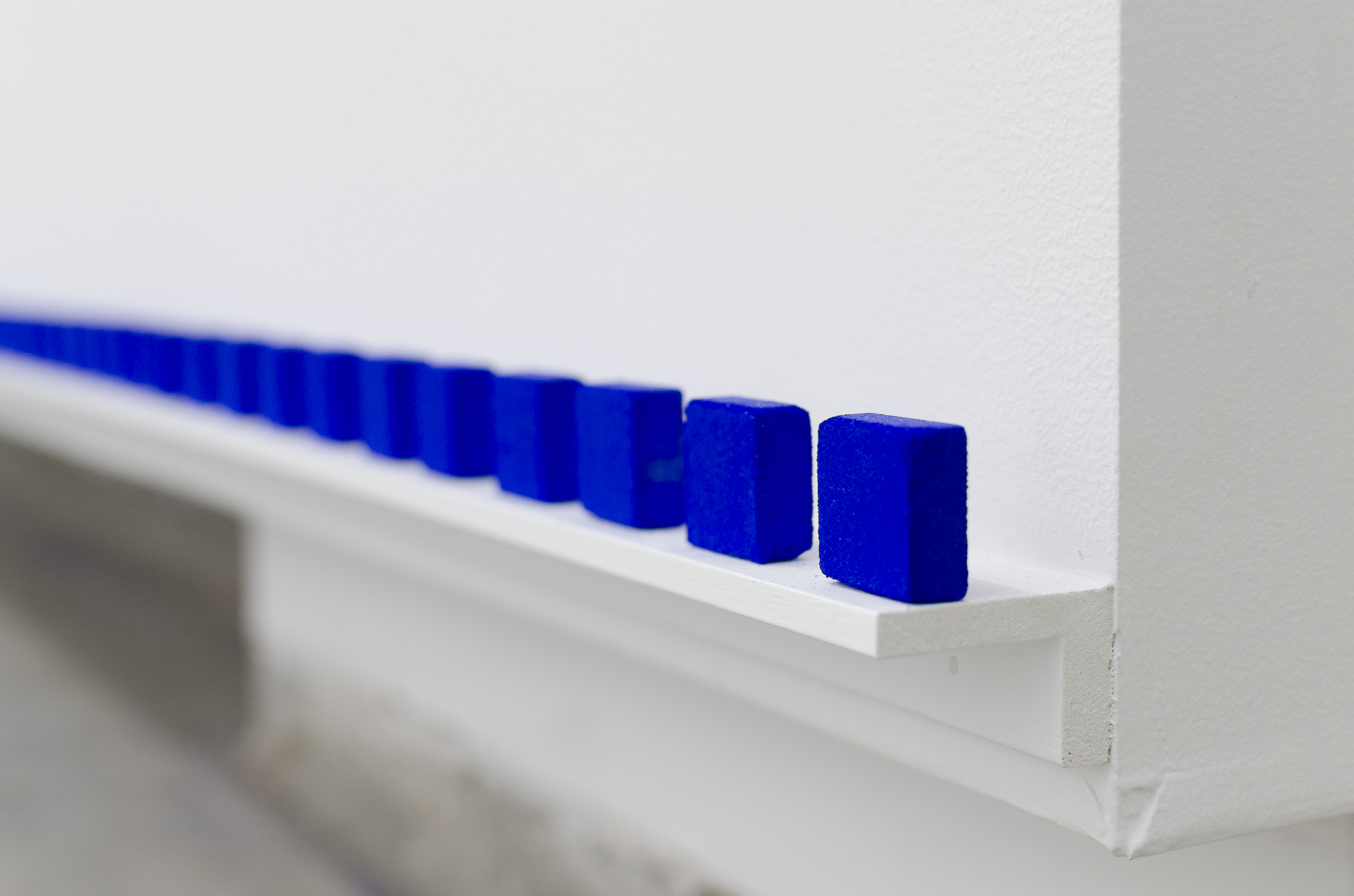
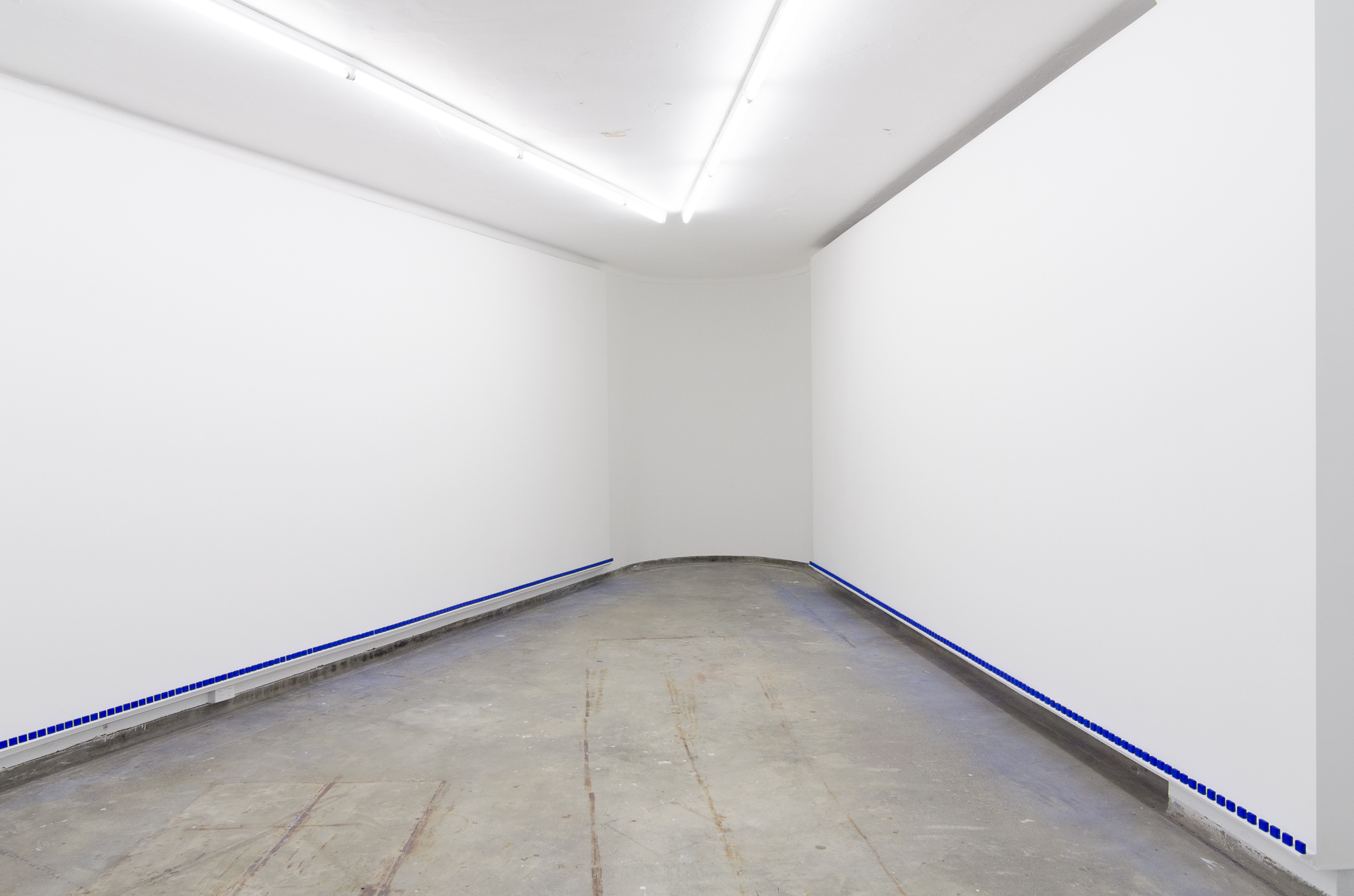
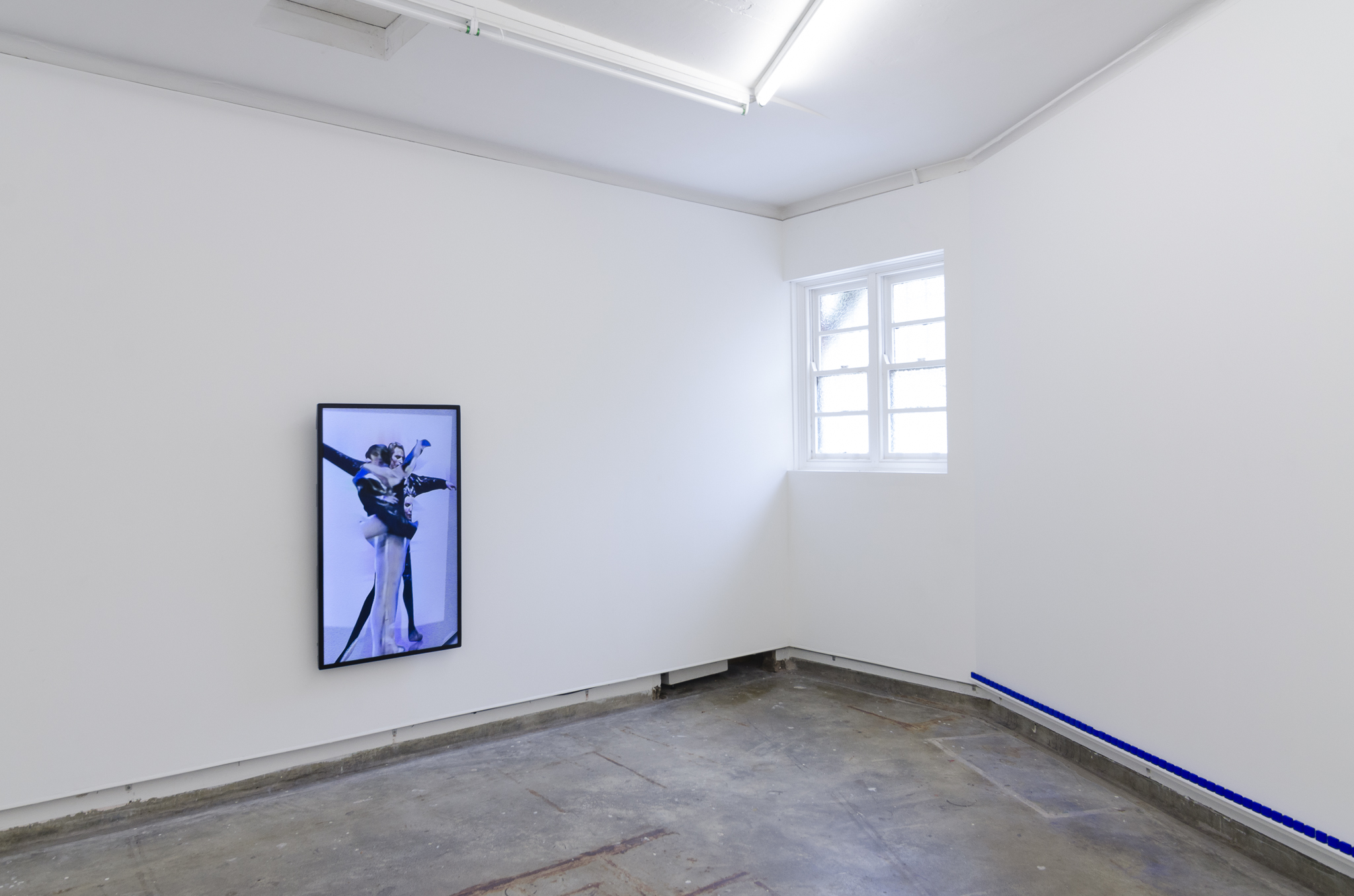
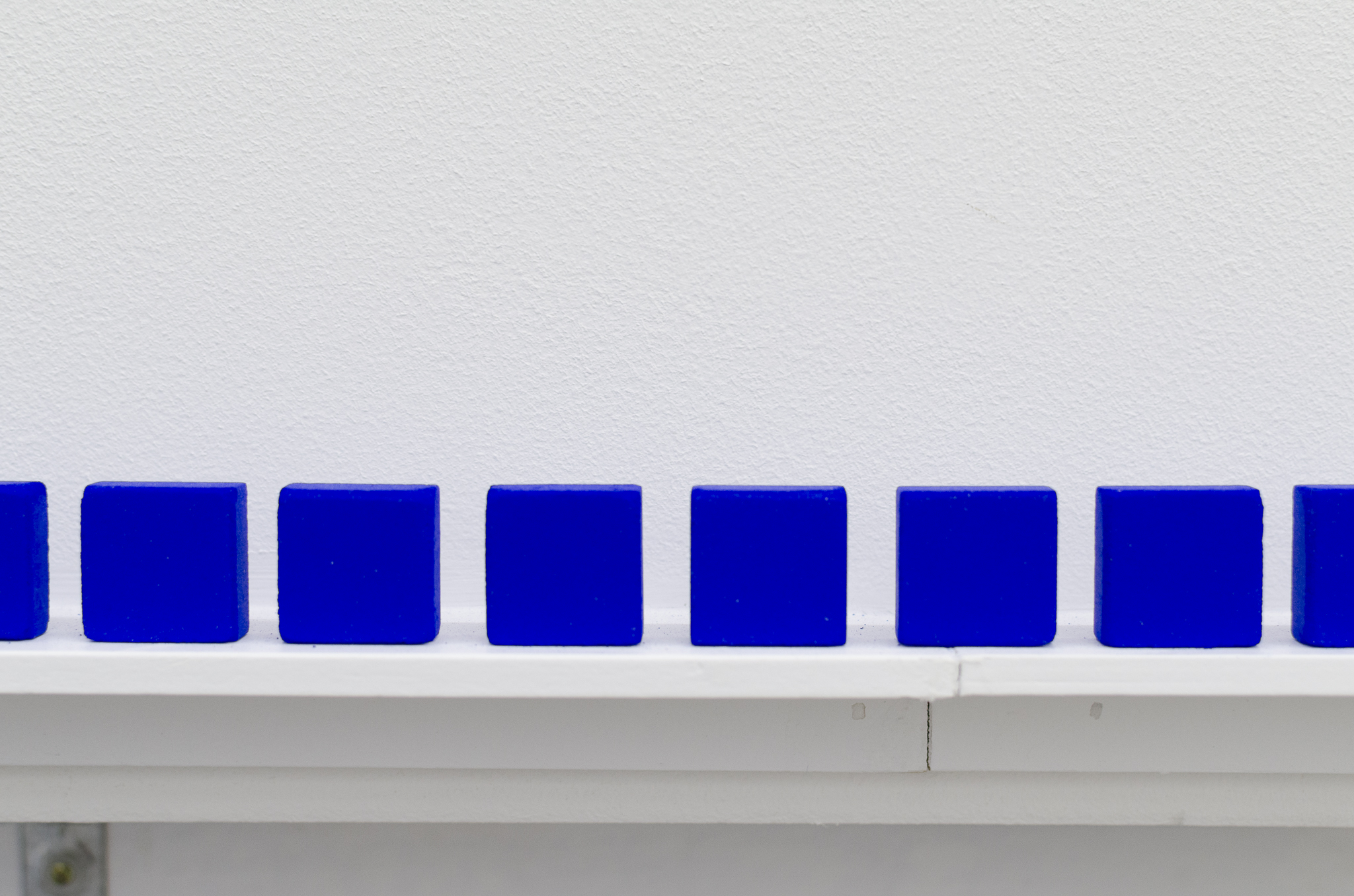
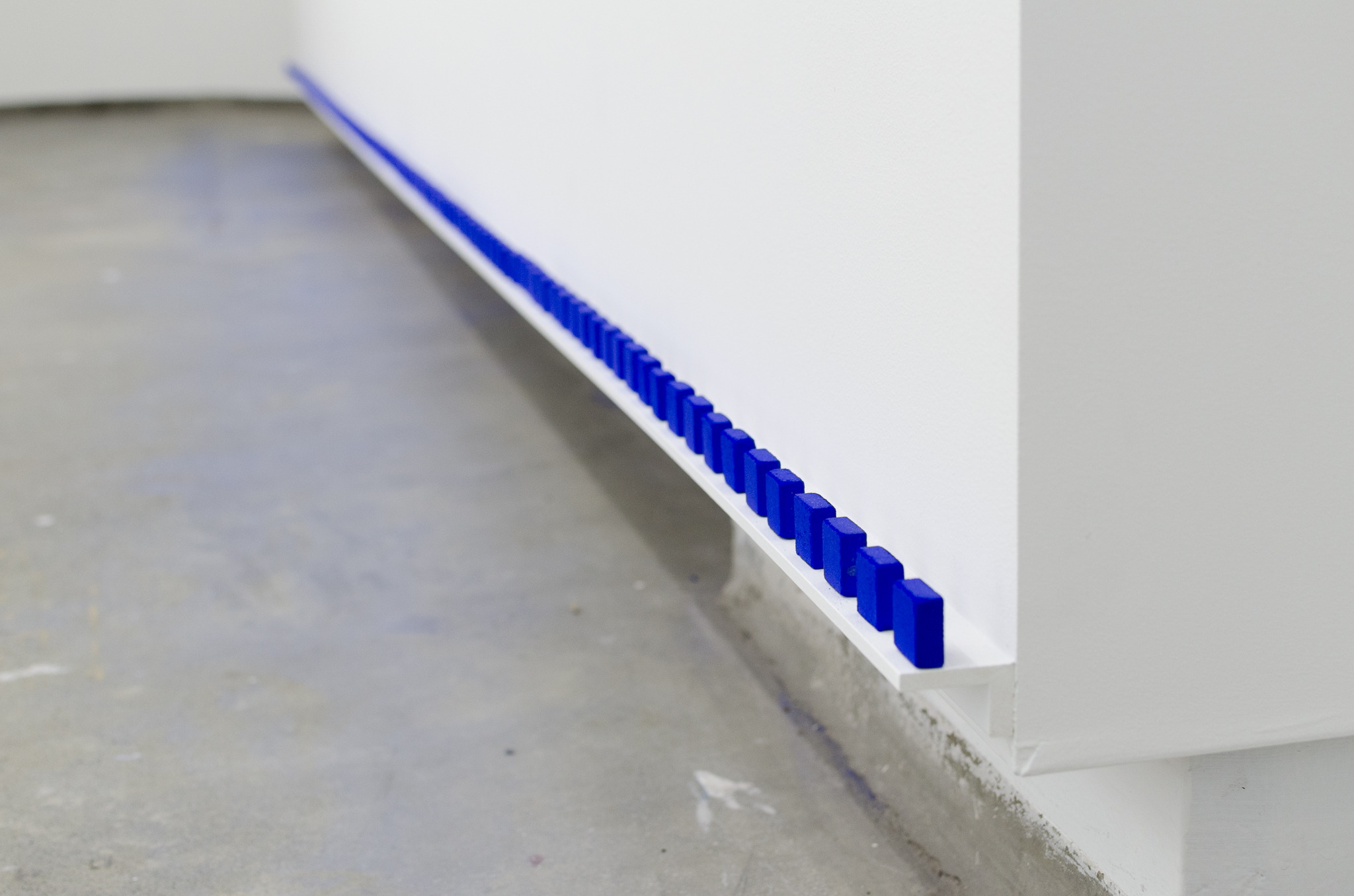
Sixteen Days at Sea (384 Cubes of Reckitt’s Blue), (installation views, Firstdraft), 2015
three hundred and eighty four cubes of Reckitt’s Blue laundry powder, custom shelf, dimensions variable. Photo Credit: Lucy Parakhina